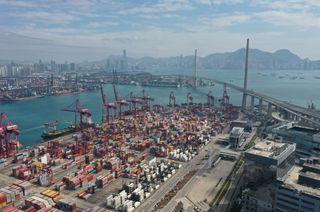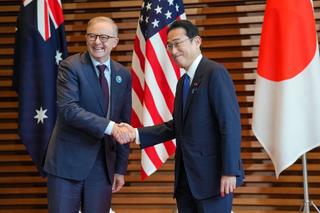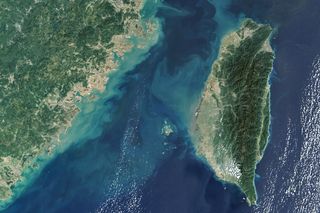Trade and economics have increasingly become tools of political and diplomatic disputes between countries. In 2020, China placed trade restrictions on several Australian exports in response to the Australian Government calling for an inquiry into the origins of COVID-19. On 28 March 2024, following negotiations and a thawing of Australia-China relations, one of the last remaining tariffs – on wine – was lifted.
The episode provides an interesting case study of a country’s response to economic coercion. Despite China being its largest trading partner, Australia was able to withstand most trade restrictions by finding markets in other countries, but this often came at an expense.
China's trade restrictions on Australia
Trade restrictions on Australian products began between May and November 2020 in the form of higher tariffs placed on wine and barley; biosecurity measures against some beef and timber; and unannounced bans (often known as non-tariff barriers) on coal, cotton and lobsters. As a result, Australia’s exports of certain goods to China fell to nearly zero. At the time, China accounted for 33 per cent of Australia’s export market, declining to 27.6 per cent in 2022.
Figure 1: Monthly Australian exports to China of targeted goods, 2019-2023, A$000,000s1
At the beginning of 2023 with a new Australian Government in place, China began lifting its trade restrictions and Australian exports to China of barley, cotton, timber, coal and copper resumed. Following the October 2023 meeting between Prime Minister Albanese and President Xi Jinping, Beijing indicated it would restart imports of lobster and review its tariffs on wine. In exchange, Australia would suspend its World Trade Organization (WTO) case against China. Wine tariffs were lifted on 28 March 2024, with hopes lobster imports will resume soon.
The impact on Australian businesses
While China’s trade measures led to huge falls in Australian exports of the targeted goods to China, many of the affected Australian industries found new markets and sold their products to other global customers.
Australian cotton is used in the global fabric and textiles industry. The cotton industry, with federal support, was able to promote Australian cotton to other markets and form new relationships with buyers in Vietnam, Indonesia and Thailand. Australia’s cotton exports to Vietnam more than tripled between 2018 and 2022 and, by 2022, Australia was their second-largest source of cotton. Even after China opened up its markets again, Australian exports continued to Vietnam. In 2023, 36 per cent of Australian cotton went to Vietnam.
It's likely Australia was easily able to find other markets for cotton as there are increasingly many major players in the textiles industry outside China – particularly in South and Southeast Asia. Vietnam’s global cotton imports have tripled since 2012.
Following the 2022 Russian invasion of Ukraine and the resulting global energy crisis, coal producers were easily able to find buyers in Japan and Europe. Twenty per cent of coal exports went to China in 2019 and only nine per cent in 2023, even after restrictions were lifted. Copper miners also increased their exports to Japan and South Korea.
On the other hand, while the barley industry was able to find new markets in the Middle East, these markets offered lower prices than China, where Australia had strong relationships with local breweries. There are two types of barley: feed barley, used as animal feed, and malt barley, the core ingredient in beer production. Malt barley commands a premium price over feed barley and is often of higher quality. Prior to the ban, 44 per cent of Australia’s barley exports to China were malt quality. While Australia was able to find alternative markets for its barley, this was primarily to countries in the Middle East, sold at a lower price and used for animal feed. So, when the Chinese market opened up again, barley exporters flocked back to take advantage of the price premiums – 76 per cent of barley exports have gone to China since restrictions were lifted.
Other industries found it more difficult to find alternate markets. Total Australian wine exports fell by 30 per cent between 2020 and 2022. Prior to restrictions, China made up about a third of Australia’s wine exports, but conditions in the global wine market, including global oversupply, meant Australia struggled to find other buyers. Although the industry managed to achieve some diversification – exports to Singapore, Malaysia and Thailand increased – wine is a luxury product that is not as widely-consumed in many countries, particularly in Asia. Now that restrictions have been lifted, its likely much of the market will return to China.
The trade measures have made businesses and governments more aware of the risks of overdependence on one country for trade.
Lobster and timber exports were dominated by China prior to restrictions and have few alternate buyers or many alternate suppliers. Total Australian lobster exports fell by 64 per cent between 2019 and 2021.
Figure 2: Share of total Australia exports by top 5 destinations, 2019-2023, per cent2
The trade measures have made businesses and governments more aware of the risks of overdependence on one country for trade. The Australian Government provided A$198 million in grants to diversify export markets, and industry associations such as Australian Grape and Wine are pursuing diversification strategies. However, China is still a major destination for many of these goods, often offering the best prices and a huge consumer market, so it’s likely they will continue to make up a large proportion of Australian exports going forward.
The future of trade restrictions
China’s trade restrictions against Australia were relatively unsuccessful as many Australian exporters found new markets. They may have even backfired, encouraging market diversification in some industries. China is also reliant on certain Australian commodities for its own industries, including iron ore, LNG and wool, so any restrictions on those products would reverberate back on China.
China’s trade restrictions against Australia were relatively unsuccessful as many Australian exporters found new markets.
For Beijing, its attempt at economic coercion may be more about sending a political message. In the future, Beijing could apply lessons from this round of restrictions and more effectively design them, such as targeting products with fewer alternative markets like lobster. Whether this would lead to changes in Australian policy is unknown – it hasn’t worked yet.
Australia is not the only country China has targeted with trade restrictions. Beijing has used them again Taiwan, Lithuania, South Korea and Japan. China has also used its dominance in its own exports to place export bans on certain products used in the production of semiconductors and electric vehicles, including gallium, germanium, graphite and rare earth processing equipment. These bans were likely a warning shot in retaliation to the United States’ own trade restrictions on advanced semiconductors. If relations between Australia and China sour again in future, it’s not unrealistic that China could pursue trade restrictions again, through targeted import bans, or export restrictions on critical goods.
The trade restrictions that China placed on Australia in 2020 were an example of a growing trend of trade weaponisation for political aims. But they were also an example of Australia’s resilience against economic coercion. Apart from speciality products (such as wine and lobster), many Australian businesses were able to pivot to other markets, reducing the effectiveness of the trade restrictions.








